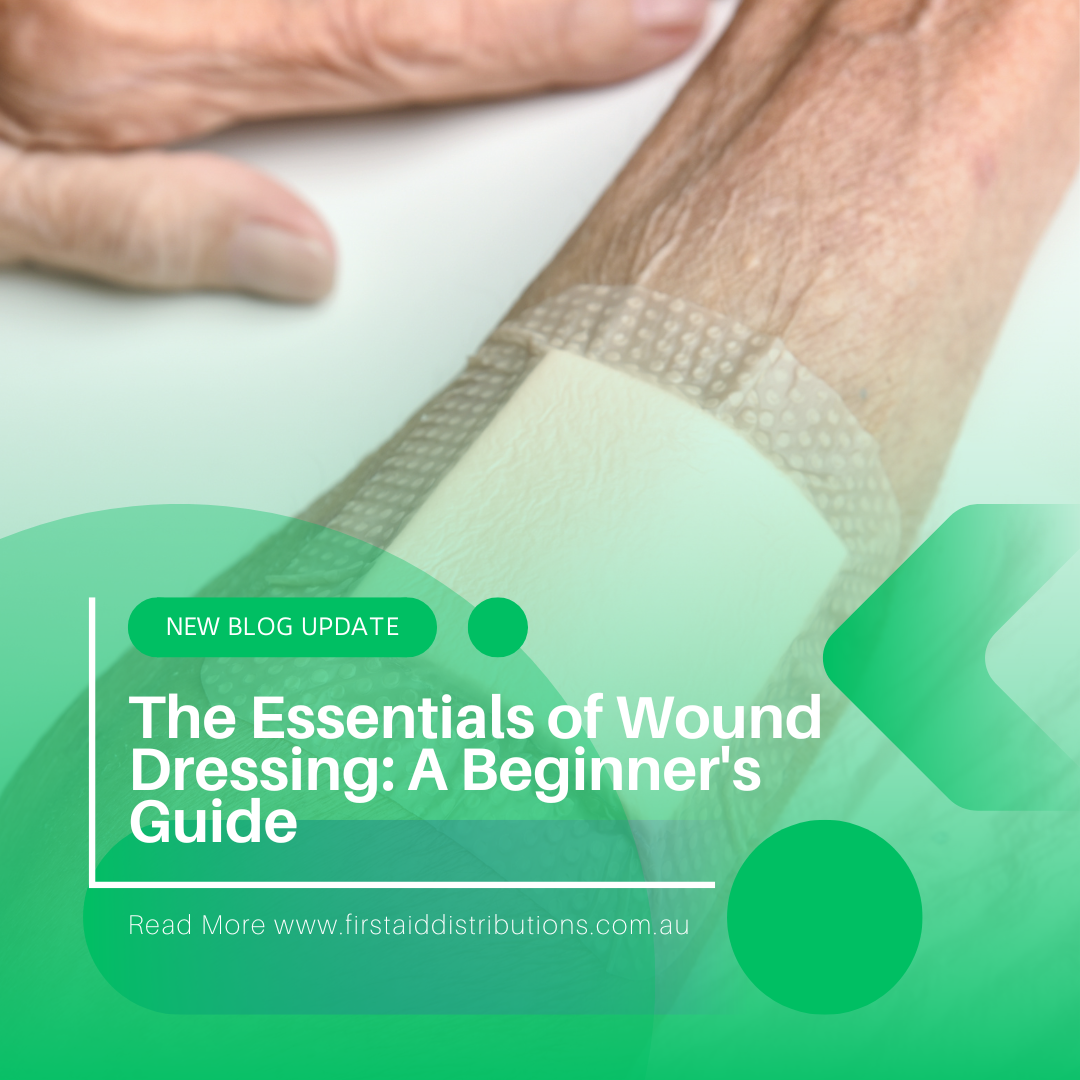FREE FREIGHT AUSTRALIA WIDE FOR ORDERS OVER $200

The Essentials of Wound Dressing: A Beginner's Guide
Whether you're a parent, an outdoor enthusiast, or simply someone who likes to be prepared, knowing the basics of wound dressing is an essential skill. Injuries can happen anywhere, from the kitchen to the hiking trail, so understanding how to properly manage a wound can make a significant difference in healing and preventing infections. Here’s a beginner’s guide to the essentials of wound dressing.

Understanding Wounds
Before you can treat a wound, it’s important to understand the type of wound you’re dealing with. Wounds can be classified as cuts, scrapes, punctures, or burns, each requiring a slightly different approach in care.
- Cuts are clean splits in the skin.
- Scrapes involve surface-level abrasion that often covers a larger area.
- Punctures are typically deeper, caused by a sharp object entering the skin.
- Burns require special care to manage both the damage and the pain.
Cleaning the Wound
The first step in any wound care is cleaning. This helps prevent infection and ensures that any dressings applied are effective.
- Wash your hands thoroughly with soap and water before touching the wound or the dressing materials.
- Rinse the wound under clean, running water to remove any dirt or debris. Avoid using hydrogen peroxide or iodine on a fresh wound as these can irritate the tissue and delay healing.
- Use a gentle soap to clean around the wound, not directly in it, to avoid irritation.
- Pat dry the area around the wound with a clean towel.
Choosing the Right Dressing
Selecting the appropriate dressing is crucial as it can affect the healing process. Here are some common types of dressings:
- Gauze pads are suitable for most wound types and come in sterile packets.
- Adhesive bandages are ideal for small cuts or scrapes.
- Hydrocolloid dressings create a moist environment that promotes healing, perfect for burns or more severe cuts.
- Transparent film dressings are used for shallow, clean wounds and are especially useful for monitoring the healing process without removing the dressing.

Applying the Dressing
Applying a dressing correctly is just as important as selecting the right type:
- Use sterile tweezers to handle the dressing if necessary.
- Cover the entire wound and a bit of the surrounding area to ensure it’s protected from bacteria.
- Secure the dressing with medical tape if it does not already have an adhesive side.
- Change the dressing daily or whenever it becomes wet or dirty. This is essential to prevent infection and to check on the healing process.
Monitoring and Aftercare
After you’ve dressed the wound, keep an eye on it for signs of infection, such as redness, swelling, increased pain, or a foul odor. If you notice any of these symptoms, consult a healthcare professional.
- Keep the wound clean and dry between changes.
- Avoid picking or scratching at the wound.
- Follow up with your doctor if the wound does not begin to heal within a few days.
Mastering the basics of wound dressing is a valuable skill that can help you take better care of yourself and others. By following these simple steps, you can effectively manage minor injuries at home and prevent complications. Remember, if you’re ever in doubt, especially with more severe injuries, it’s best to seek professional medical advice.
